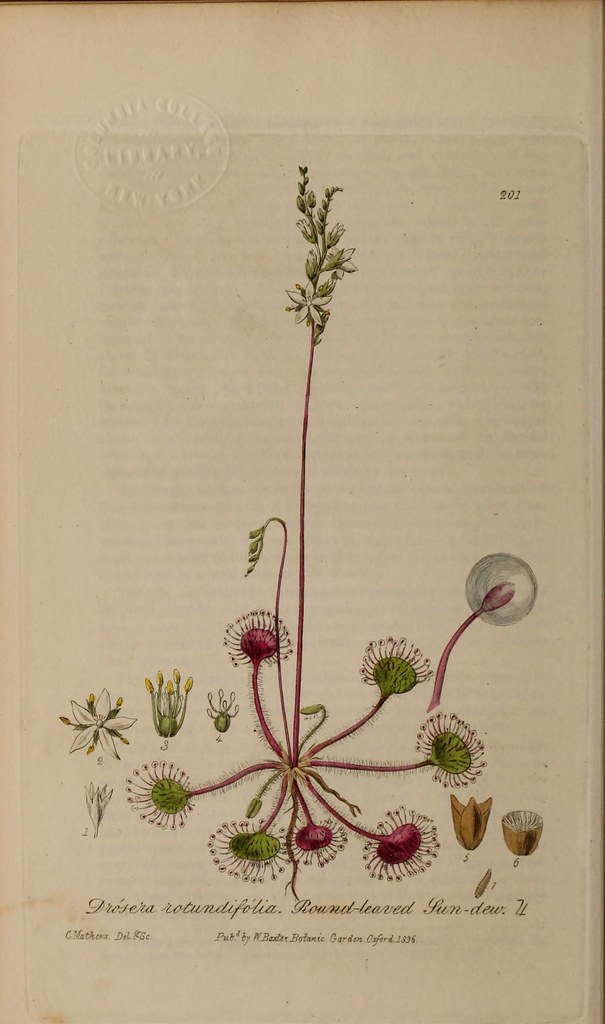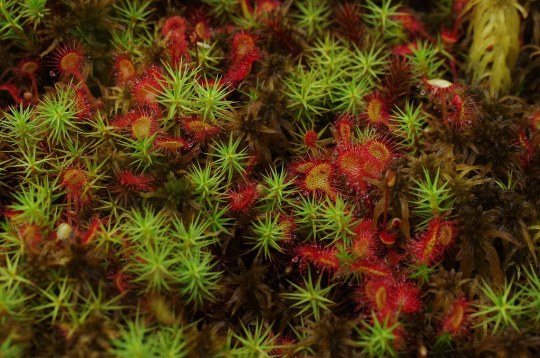#drosera rotundifolia
Text

A Poet’s Lunch, Sundew (Drosera rotundifolia) and horsefly (Haematopota sp.), Devilla Forest, Scotland
‘A 4.30am alarm to get to Devilla Forest for some early morning butterflies resulted in me finding my first ever sundew. It was even better that it had prey. When I discovered it had snared a horsefly, I was extremely excited. There’s something poetic about the piece: the horsefly, known for biting us, was bitten by the plant’
Photograph: Matt Doogue
British Wildlife Photography Awards
#matt doogue#photographer#british wildlife photography awards#sundew#drosera rotundifolia#horsefly#haematopota sp#devilla forest#scotland#nature#macrophotography
38 notes
·
View notes
Photo

Roundleaf Sundew by Tero Karppinen on Flickr.
This work is licensed under CC BY 2.0.
#Drosera rotundifolia#roundleaf sundew#round-leaved sundew#common sundew#carnivorous plants#green#red#cultivated#landscape#foliage#creative commons#creativecommonsplants#curators on tumblr#botany#plants#plant blog#plant photography
50 notes
·
View notes
Photo







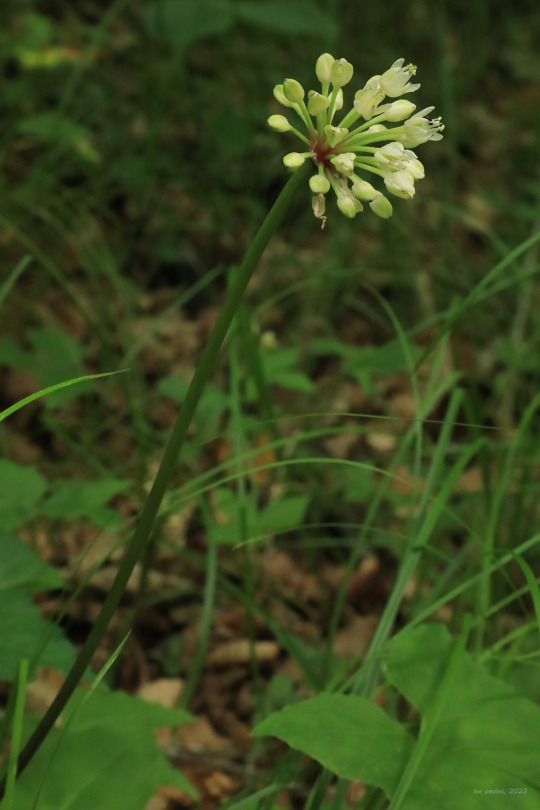


A few mementos from a hike last weekend on Cowpasture Trail at the Cranberry Glades Botanical Area.
From top: rose pogonia (Pogonia ophioglossoides), a delicate and fragrant bog orchid; mountain wood sorrel (Oxalis montana), a shade-tolerant perennial with an affinity for mossy nooks; round-leaved sundew (Drosera rotundifolia), a carnivorous native of the local sphagnum bogs; tall meadow rue (Thalictrum pubescens), which produces loosely-clustered panicles of starry, white flowers; hemlock varnish shelf (Ganoderma tsugae), a beautiful shelf fungus with a lacquer-like surface; a ramp (Allium tricoccum) flower, which emerges from the forest floor in late June/early July after the plant’s leaves have died back; black-eyed Susan (Rudbeckia hirta), also known as gloriosa daisy, one of summer’s finest wildflowers; and scarlet beebalm (Monarda didyma), also known as Oswego tea, a stunning pollinator plant in the mint family much loved by hummingbirds.
#appalachia#vandalia#west virginia#summer#wildflowers#flora#allegheny mountains#monongahela national forest#cranberry glades#cowpasture trail#pogonia ophioglossoides#rose pogonia#snakemouth orchid#oxalis montana#mountain wood sorrel#drosera rotundifolia#round-leaved sundew#thalictrum pubescens#tall meadow rue#ganoderma tsugae#hemlock varnish shelf#allium tricoccum#ramp#rudbeckia hirta#black-eyed susan#monarda didyma#scarlet beebalm#oswego tea
112 notes
·
View notes
Text

#Drosera rotundifolia#sundew#plantphotography#plantlover#plant flowers#plant photography#plant#plantblr#plantlife#fluffy moss#mossyforest#mossy woods#green moss#sphagnum moss#Sphagnum#bog moss#green energy#beautiful#beautiful photos#my photo#photography#photooftheday#naturecore#photoart#forest#woods#forest view#walking in nature#nature#goblincore
38 notes
·
View notes
Video
n175_w1150 by Biodiversity Heritage Library
Via Flickr:
British phaenogamous botany,. Oxford,Published by the author, sold by J.H. Parker [etc.]1834-43.. biodiversitylibrary.org/page/48926548
#Floras#Flowers#Great Britain#Medicinal plants#Plants#New York Botanical Garden#LuEsther T. Mertz Library#bhl:page=48926548#dc:identifier=http://biodiversitylibrary.org/page/48926548#Drosera rotundifolia#Round leaved sundew#flickr#drosera#round-leaved sundew#common sundew
4 notes
·
View notes
Text
The insectivorous sundew (Drosera rotundifolia)
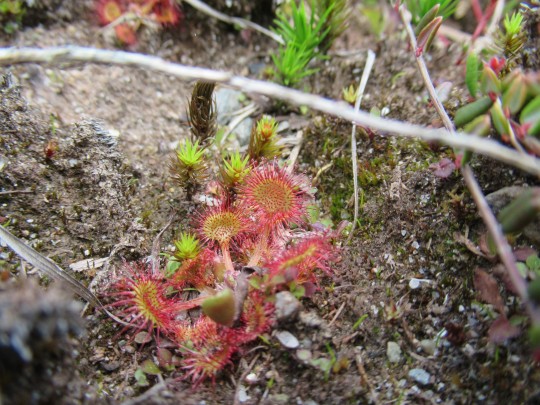
2 notes
·
View notes
Video
youtube
Guide complet de culture des Drosera rotundifolia ! Pour des Plantes Car...
0 notes
Text

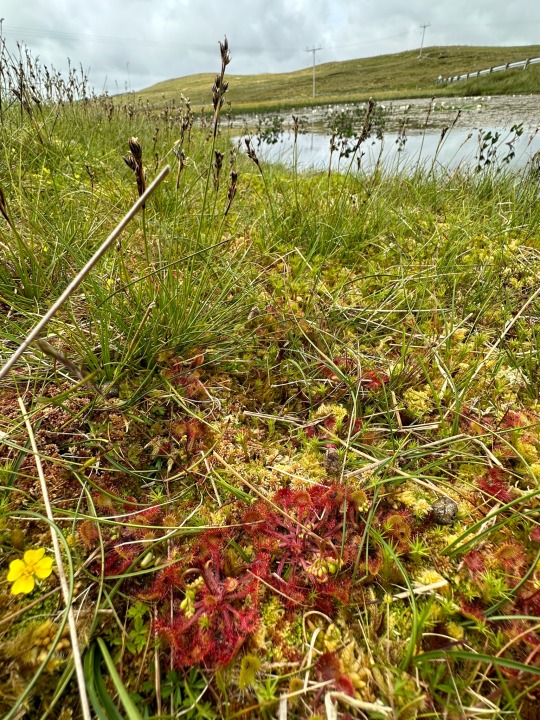
Plant of the Day
Saturday 29 July 2023
On a trip to Shetland I spotted what was probably Drosera rotundifolia (round-leaved sundew) growing amongst sphagnum moss at the edge of a pool. This tiny carnivorous plant catches insects to increase their nitrogen supply using sticky leaves as traps.
Jill Raggett
190 notes
·
View notes
Note
Hi! I am trying to translate some of my oc’s names in clanmew but am running into trouble with how region-specific they are. I was wondering what you thought of these?
Agavebloom: Luparkikmwaro -- translates directly to “blue-spike-is-blooming” since there isn’t a good word to translate agave into. The closest members to the agave family I could translate to would be either lily or bluebell, which would be Urchamwaro (lily-of-the-valley-is-blooming) or Hebsimwaro (bluebell-is-blooming). I feel like the additional flowers take away the meaning of his name though, since it’s supposed to come from the fact that agaves take forever to bloom especially to a cat, therefore a rarity, and his mentor had never had a surviving apprentice before.
Guanopelt: Hafefylborrl -- translates to bird/bat pelt, since there’s no easy way to translate guano lol. But yes he’s literally named after bat poop, his clan really likes unconventional/gross names.
Chollasting: Also really difficult! I finally settled on Kikluarapokal, spine-jumping-stinging-nettle, since there doesn’t seem to be any cacti translations, and she’s named after jumping cholla cacti and how much it hurts when they attach to you.
If there’s any better suggestions for these names please let me hear them!
Hmm...
Agave is definitely a hard one, since I can't think of any plants that base Clanmew-speaking cats would even liken it to. It looks like a burdock or a teasel growing like a bush. I would recommend coming up with a word in your Clan's dialect to describe it, that's quite unique.
But here's some new words that you can play around with to make a word for yourself;
Greater Burdock/Lappa (Arctium lappa) = Kegdio
A type of "thistle" in Clanmew with a very small flower and a whole LOT of spikes.
Teasel (Dipsacus fullonum) = Oorra
Probably the closest we'll get to a "cactus," because, cacti are a New World family! If you went to a desert in Africa or Eurasia, you would not find a cactus, except for some cool not-a-cactus-but-trying-to-be types down towards Madagascar. Teasels are considered a type of thistle in Clanmew, and used in some finishing stages of textile processing as a brush. It's a fleshy, green, spiky plant with a round "ring" of a flower.
This word is Parkmew in origin, and is related to the word for the King's "crown" in reference to its distinctive flower ring.
Fruited/Fruiting/Will Fruit = Pakawooan/Pakawooa/Pakawoo
The act of a plant bearing fruit. Because most Clan cats are NOT ThunderClan (we say, pointedly, at thunderclan), this does not refer only to edible fruits. This equally refers to apple trees and OAK trees, dropping acorns.
This is VERY important when you take into account that Clan cats are carnivores, and fruiting trees mean more prey.
First Fruiting/Promotion = Ka'paka
The verbs for fruiting ONLY applies to a plant after the ka'paka-- its very first crop. It is the mark of maturity for a fruiting plant. It has a double use for promotion through ranks as well
On Guano... the first thing my mind goes to is Sslop, which is the term for wet, sticky mud in Clanmew. When used in reference to body parts, it suddenly means "mucus" or "body fluid," hence Runningnose's name (Sslopchoop) being a difficult translation.
You could combine Sslop and the word for white, Osk, to make Sslosk. I don't know too much about guano, but I've heard it can be a fuel, though I'm unsure of how true it is.
So, you can play around with this word if you'd like;
Peat = Mai
The vital material buried under the turf of a moorland, made from layers of buried plant matter. Highly flammable!
There's also words for bats in the Lexicon, if you'd like to check there!
And, lastly, Cholla. Like I mentioned, we won't be finding any cacti here. The closest will be teasel. Burr (kido) is also in the Lexi, but there's one more interesting word that could have been likened to cacti in a new environment;
Sundew (Drosera rotundifolia) = Kigu
Comes from an intense contraction of Swarming Bug-Eating (Kbkb Guburoo), the only purely carnivorous plant that Clan cats see on a regular basis. A fleshy green with bright red, sticky hairs that rise off it, it's hard to miss and endlessly fascinates the cats. A plant that hunts! What a wonderful, respectable creature!
I can imagine Clan cats dropped off in the middle of a western hemisphere desert might apply this sort of reverence to surrounding, hardy cacti, especially if the cacti can be used to help them survive.
43 notes
·
View notes
Photo

Roundleaf Sundew by Mark Freeth on Flickr.
This work is licensed under CC BY 2.0.
#common sundew#roundleaf sundew#round-leaved sundew#Drosera rotundifolia#carnivorous plants#square#cultivated#foliage#green#pink#black#creative commons#creativecommonsplants#curators on tumblr#botany#plants#plant blog#plant photography#flickr
36 notes
·
View notes
Text
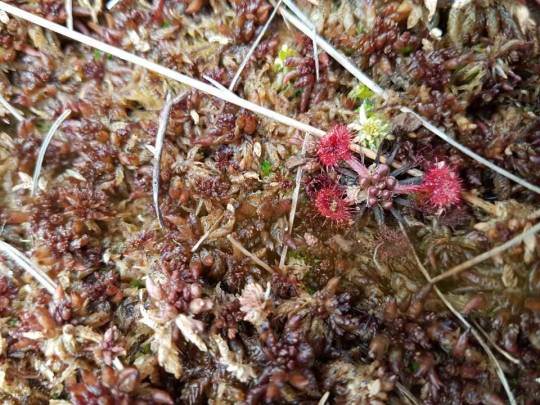
Here is a little picture that I am super proud of !
It is of a round-leaved sundew (Drosera rotundifolia).
I saw it in a peat bog in 2018.
This little fella lives exclusively in marshes and bogs, water dominated environment with low to no nutrients and which are very acidic. To survive, they eat insects that they attract with tiny drops of a sugary substance covering the leaves. The liquid is in fact a glue, the insect will stay stuck and will be dissolved by acids.
This fascinating carnivorous plant is strictly protected in France, endangered by the shrinking of wetlands accross Europe.
4 notes
·
View notes
Photo
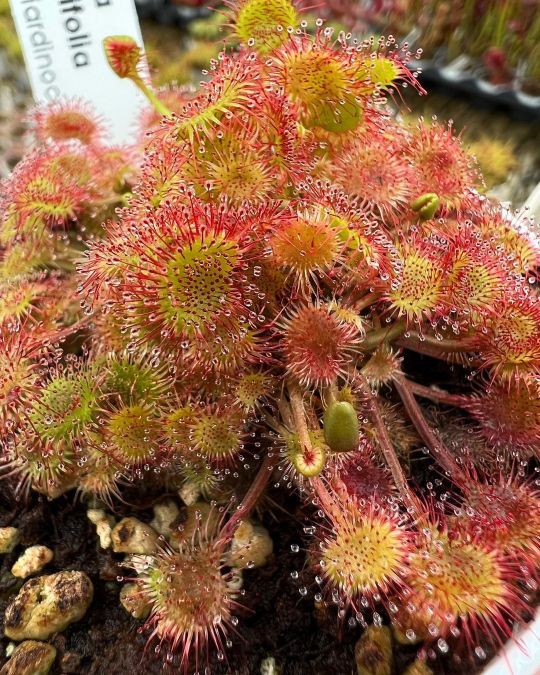
Drosera rotundifolia is one of the most widespread Sundews in the world and it still so spectacular. This one is in @giardino_carnivoro greenhouse. (at Veneto) https://www.instagram.com/p/CkOzzhipsRD/?igshid=NGJjMDIxMWI=
52 notes
·
View notes
Video
n314_w1150 by Biodiversity Heritage Library
Via Flickr:
The flora homoeopathica :. London :Leath & Ross,1852-1853.. biodiversitylibrary.org/page/6163800
#Botany#Medical#Homeopathy#Materia medica and therapeutics#Materia medica#Vegetable#Pictorial works#Missouri Botanical Garden#Peter H. Raven Library#bhl:page=6163800#dc:identifier=http://biodiversitylibrary.org/page/6163800#flickr#drosera rotundifolia#Round-leaved sundew#sundew#roundleaf sundew#common sundew#botanical illustration#scientific illustration
2 notes
·
View notes
Photo
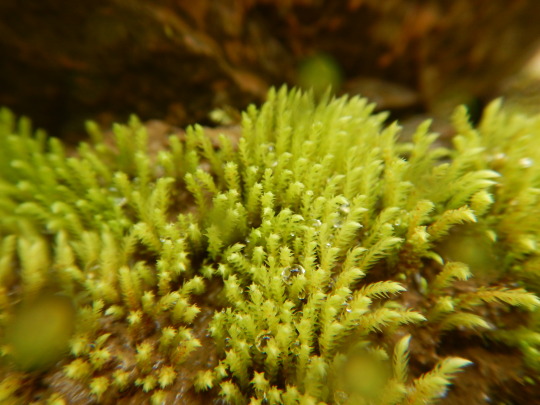
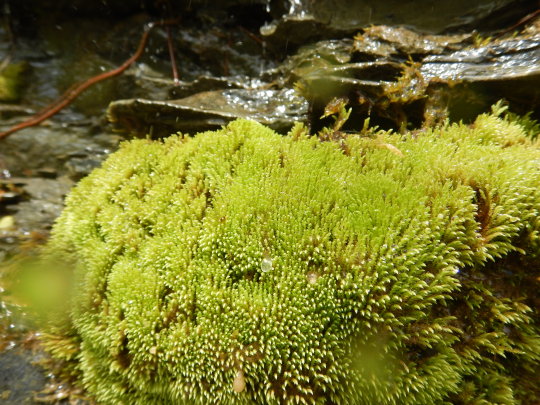

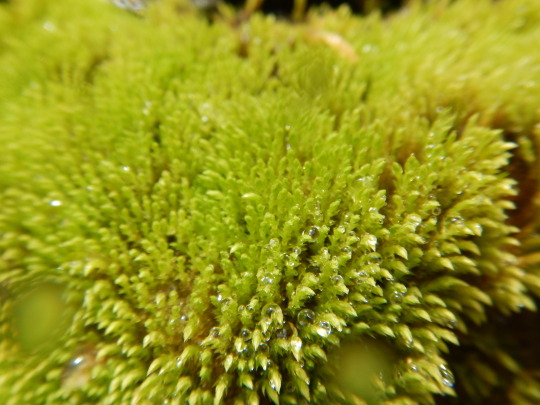
Hedwigia ciliata
The lushest Spray cliff heap of Ciliated hoarmoss i’ve ever seen, RRG KY, on Alkaline Shale.
A species that is associated with epipetric habits (growing on bare rock)
and while this clump is associated with spray habitat they are really good at drying out and still functioning after a long spell.
In more acidic spraycliffs it’s possible to find Drosera rotundifolia in clumps like this.
18 notes
·
View notes
Text
drosera rotundifolia leaf cuttings are sprouting little babies <3 <3 :]
6 notes
·
View notes
